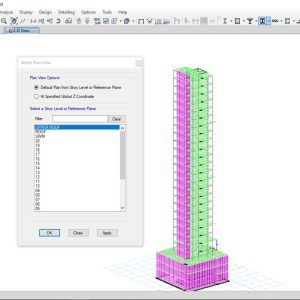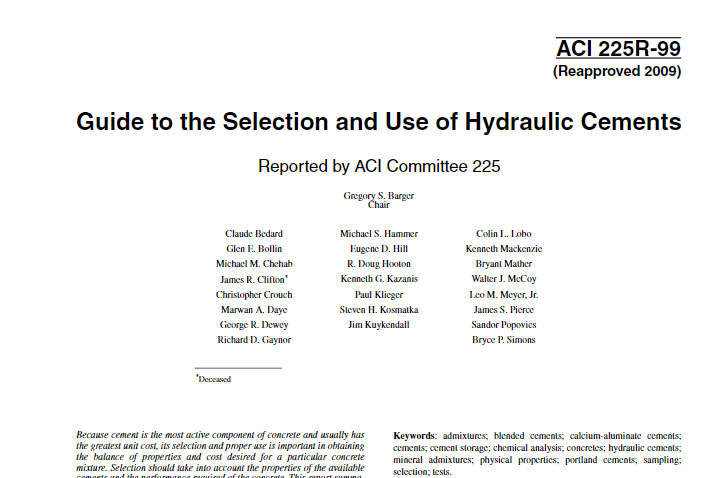Description
-
 MS Office Professional Essential Training$200.00
MS Office Professional Essential Training$200.00 -
 Primavera P6 Professional Training Course$250.00
Primavera P6 Professional Training Course$250.00 -
Product on sale
 20+ Story High Rise BuildingOriginal price was: $39.99.$9.99Current price is: $9.99.
20+ Story High Rise BuildingOriginal price was: $39.99.$9.99Current price is: $9.99. -
 CSI SAFE Essential Training Course$250.00
CSI SAFE Essential Training Course$250.00 -
 CSI ETABS Essential Training Course$350.00
CSI ETABS Essential Training Course$350.00
Cement paste is the binder in concrete or mortar that holdsthe fine aggregate, coarse aggregate, or other constituents to-gether in a hardened mass. The term hydraulic is associatedwith the word cement in this document to point out to theconsumer that the basic mechanism by which the hardeningof the concrete or mortar takes place is the reaction of the ce-ment material with water.
The word hydraulic also differen-tiates this type of cement from binder systems that are basedon other hardening mechanisms.The properties of concrete depend on the quantities andqualities of its constituents. Because cement is the most activecomponent of concrete and usually has the greatest unit cost,its selection and proper use are important in obtaining mosteconomically the balance of properties desired for a particularconcrete mixture.
Most cements will provide adequate levelsof strength and durability for general use. Some providehigher levels of certain properties than are needed in specificapplications. For some applications, such as those requiringincreased resistance to sulfate attack, reduced heat evolution,or use with aggregates susceptible to alkali-aggregate reac-tion, special requirements should be imposed in the purchasespecifications.
While failure to impose these requirements may have serious consequences, imposing these requirementsunnecessarily is not only uneconomical but may degrade oth-er more important performance characteristics. For example,moderate sulfate resistance may be specified for certain plant-manufactured structural elements that require strength gain inthe production process. Because the compositional variationsthat impart sulfate resistance tend to reduce the rate ofstrength gain, some compromise must be made.
The goal of the specifier is to provide specifications thatwill ensure that the proper amounts and types of cement areobtained to meet the structural and durability require-mentsno more, no less. Due to gaps in our knowledge, thisgoal is seldom, if ever, fully achieved; economies, however,can often be obtained with little or no decrease in perfor-mance in service, if specifications are aimed at this goal.
-
 Turnitin Instructor with AI Detection$70.00 – $130.00
Turnitin Instructor with AI Detection$70.00 – $130.00 -
 SmartPLS 4.1 Processional | Lifetime activation key$60.00
SmartPLS 4.1 Processional | Lifetime activation key$60.00 -
 EndNote Lifetime for Windows /Mac Software Full Version$8.00 – $15.00
EndNote Lifetime for Windows /Mac Software Full Version$8.00 – $15.00 -
![Guide to the Selection and Use of Hydraulic Cements 11 IBM SPSS Statistics v30 | v29 [Lifetime Activation with key]](https://civilmdc.com/wp-content/uploads/2022/03/IBM-SPSS-30-Key-300x300.jpg) IBM SPSS Statistics v30 | v29 [Lifetime Activation with key]$15.00 – $45.00
IBM SPSS Statistics v30 | v29 [Lifetime Activation with key]$15.00 – $45.00 -
 LinkedIn ALL COURSES LIFETIME Warranty$25.00
LinkedIn ALL COURSES LIFETIME Warranty$25.00 -
Product on sale
 REF-N-WRITE | Premium Account Lifetime ActivationOriginal price was: $45.00.$22.00Current price is: $22.00.
REF-N-WRITE | Premium Account Lifetime ActivationOriginal price was: $45.00.$22.00Current price is: $22.00. -
 QuillBot’s paraphrasing tool | Premium Account 6 month | + WARRANTY$12.00
QuillBot’s paraphrasing tool | Premium Account 6 month | + WARRANTY$12.00 -
 Grammarly Premium Account 6 Month |12 month$20.00 – $35.00
Grammarly Premium Account 6 Month |12 month$20.00 – $35.00 -
 TURNIT1N Student (Plagiarism Checker) – 6 Month | 1 Year | 2 Years | 3 Years | 4 Years | LifeTime$15.00 – $200.00
TURNIT1N Student (Plagiarism Checker) – 6 Month | 1 Year | 2 Years | 3 Years | 4 Years | LifeTime$15.00 – $200.00



 Visit
Visit 